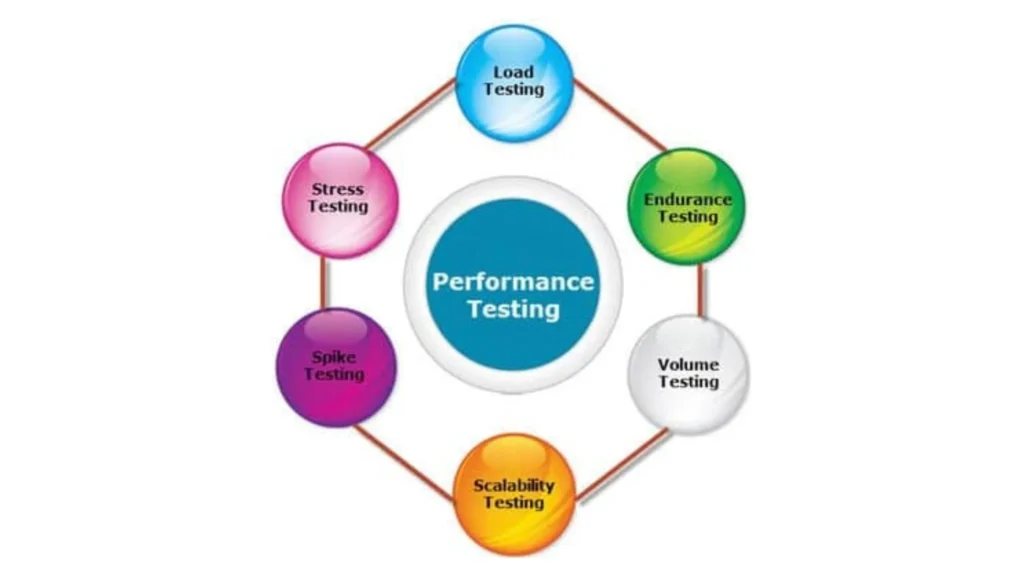Would you ever return to a website that takes ages to load, lags a lot, and the purpose of your visit to that site also gets wasted?
Well, in today’s digital world, no app or website can afford to fail under pressure. Whether you’re launching a new product or scaling up for seasonal demand, your software must run smoothly. That’s where the goal of Performance, Load, and Stress Testing comes into play.
But many teams confuse these testing types or treat them the same. The truth is, they’re very different, and knowing when and how to use them can make or break your app’s performance.
So, let’s break it all down in the simplest way possible.
What is Performance, Load, and Stress Testing?
Before we jump into the differences, let’s get to know each one.
Performance Testing checks how well your application performs under normal conditions. It focuses on speed, responsiveness, and stability.
Load Testing takes it a step further. It simulates real-life user traffic to see how your app behaves under different load conditions, like 100, 1,000, or 10,000 users.
Stress Testing pushes your app to its absolute limits. It simulates extreme traffic or usage conditions to find the breaking point, when the app crashes or becomes unresponsive.
All three belong to the family of non-functional testing, which focuses on how the software works rather than what it does.
Also Read: Top Performance Testing Types Critical for Banking Applications
How Do They Simulate Expected Traffic?
Each of these tests is designed to answer a different question about your application’s performance.
- Performance Testing uses controlled and expected traffic patterns. It helps you understand typical behavior, like how long a page takes to load or how many resources are being used during a regular session.
- Load Testing simulates concurrent user simulation. This means it creates multiple virtual users doing the same actions to check if the system can handle them all at once.
- Stress Testing adds more users or requests than the system was designed for. It helps identify weak points, such as database timeouts, memory leaks, or server overloads.
Think of it like this:
- Performance Testing = Everyday drive
- Load Testing = Traffic jam during rush hour
- Stress Testing = Trying to drive through a flood
Also Read: Top 8 Performance Testing Tools for Banking Applications
Key Difference: Tabular Comparison
| Feature | Performance Testing | Load Testing | Stress Testing |
| Goal | Check app under normal use | Measure app under expected user load | Test app under extreme/unexpected conditions |
| Focus | Speed, stability, responsiveness | Scalability and capacity | Recovery and breaking points |
| Users Simulated | Average number of users | Real-life peak user scenarios | Beyond max capacity |
| Failure Expected? | No | Possibly | Yes, deliberately |
| Type | Non-functional testing | Non-functional testing | Non-functional testing |
| Example | App loads in 2 seconds with 10 users | App handles 10,000 concurrent users | App crashes at 30,000 users |
Why Knowing the Difference Matters to Your Business?
It’s not just about testing, it’s about avoiding downtime, poor user experience, and lost revenue.
Let’s say you’re launching an e-commerce site. If you only do performance testing, your app might run fast with 100 users. But what happens on Black Friday with 5,000 users? Without load testing, you’d never know. And it could be even worse, without stress testing, you wouldn’t know how it behaves when traffic doubles due to a marketing campaign.
Understanding the goal of performance, load, and stress testing helps you:
- Plan better for scalability
- Build confidence before launch
- Avoid unexpected crashes
- Improve QA performance benchmarking
Simply put, it saves you from future disasters.
Also Read: Why Application Performance Testing Is Even More Important Now
When to Use What: Based on Project Lifecycle and App Type?
Different types of testing make sense at different stages.
- Performance Testing is ideal during early development and after every major update. It helps maintain a baseline.
- Load Testing is most effective before going live or during major seasonal events. For example, when to use load testing? Right before launching a product expected to get high traffic.
- Stress Testing is your final safety net. Run it periodically or before high-risk releases. Apps in finance, healthcare, or logistics often rely on this to ensure system resilience.
Each test serves a purpose in a good test strategy for scaling, especially for businesses preparing to grow.
7. Best Tools & Practices
There are many load testing tools and performance platforms out there. Here are a few popular choices:
- Apache JMeter: Great for all types of performance testing.
- LoadRunner: Enterprise-grade solution.
- Gatling: Powerful and developer-friendly.
- Locust: Python-based and easy to scale.
- BlazeMeter: Cloud testing with wide protocol support.
Best practices to follow:
- Always test in an environment that mirrors production.
- Don’t test everything, test what matters most.
- Use automation where possible.
- Include both backend and frontend metrics.
- Monitor infrastructure during tests.
A great QA performance benchmarking strategy isn’t just about running tests, it’s about learning from the data and applying it smartly.
Also Read: Mobile Application Performance Testing
How Do We Run These Tests at Scale?
At Avekshaa Technologies, we don’t just run tests. We build performance into your systems from the ground up.
Using a mix of proven tools, real user data, and smart automation, we simulate concurrent user simulation at scale. Whether it’s for a banking app expecting 100K transactions per minute or a media platform with 50 million users, we design a custom testing plan.
We follow a three-step approach:Avekshaa Technologies
- Understand the business goals
- Map out critical performance paths
- Run scalable tests with real-time insights
This helps you move from reactive to proactive, catching performance issues before your users do.
Visit Avekshaa to learn how we can help improve your app’s speed, scalability, and stability.
Conclusion
Now that you know the difference between performance, load, and stress testing, the next step is applying the right one at the right time.
- Don’t treat all testing types as one-size-fits-all.
- Always define the goal of performance, load, and stress testing before you begin.
- Combine smart tools, real-world data, and business goals to build stronger digital experiences.
When done right, these tests do more than just protect your app. They protect your brand, your reputation, and your customer trust.
Frequently Asked Questions (FAQs)
1. What is the main objective of each type of test?
- Performance Testing: Measure speed and stability under normal use.
- Load Testing: Measure behavior under expected user load.
- Stress Testing: Identify system failure points under extreme conditions.
2. When should I use load testing over stress testing?
Use load testing when you want to check how your app performs during peak expected traffic. Use stress testing when you want to see how your app handles traffic way beyond the normal limit.
3. Can I use the same tools for all three types?
Yes, tools like JMeter and LoadRunner support all three testing types. But the setup and objectives will differ.
4. How do these testing types help prevent app crashes during peak usage?
They simulate different traffic loads and patterns, allowing you to find and fix weak points before real users hit them.
5. How are the results from each test analyzed?
You look at metrics like response time, error rate, throughput, memory usage, and server CPU. The goal is to identify trends, bottlenecks, and limits in your system.


